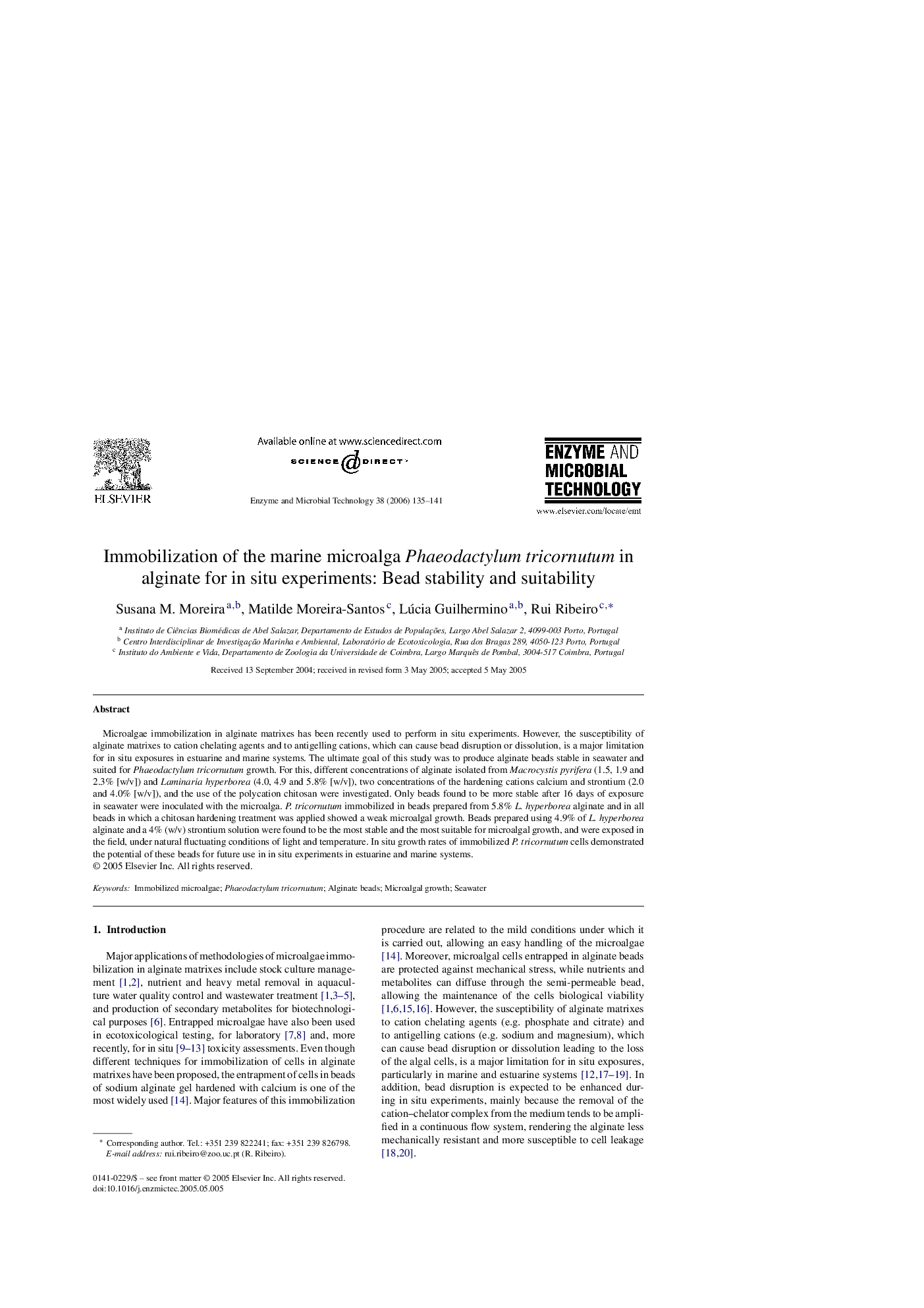| Article ID | Journal | Published Year | Pages | File Type |
|---|---|---|---|---|
| 18570 | Enzyme and Microbial Technology | 2006 | 7 Pages |
Microalgae immobilization in alginate matrixes has been recently used to perform in situ experiments. However, the susceptibility of alginate matrixes to cation chelating agents and to antigelling cations, which can cause bead disruption or dissolution, is a major limitation for in situ exposures in estuarine and marine systems. The ultimate goal of this study was to produce alginate beads stable in seawater and suited for Phaeodactylum tricornutum growth. For this, different concentrations of alginate isolated from Macrocystis pyrifera (1.5, 1.9 and 2.3% [w/v]) and Laminaria hyperborea (4.0, 4.9 and 5.8% [w/v]), two concentrations of the hardening cations calcium and strontium (2.0 and 4.0% [w/v]), and the use of the polycation chitosan were investigated. Only beads found to be more stable after 16 days of exposure in seawater were inoculated with the microalga. P. tricornutum immobilized in beads prepared from 5.8% L. hyperborea alginate and in all beads in which a chitosan hardening treatment was applied showed a weak microalgal growth. Beads prepared using 4.9% of L. hyperborea alginate and a 4% (w/v) strontium solution were found to be the most stable and the most suitable for microalgal growth, and were exposed in the field, under natural fluctuating conditions of light and temperature. In situ growth rates of immobilized P. tricornutum cells demonstrated the potential of these beads for future use in in situ experiments in estuarine and marine systems.
